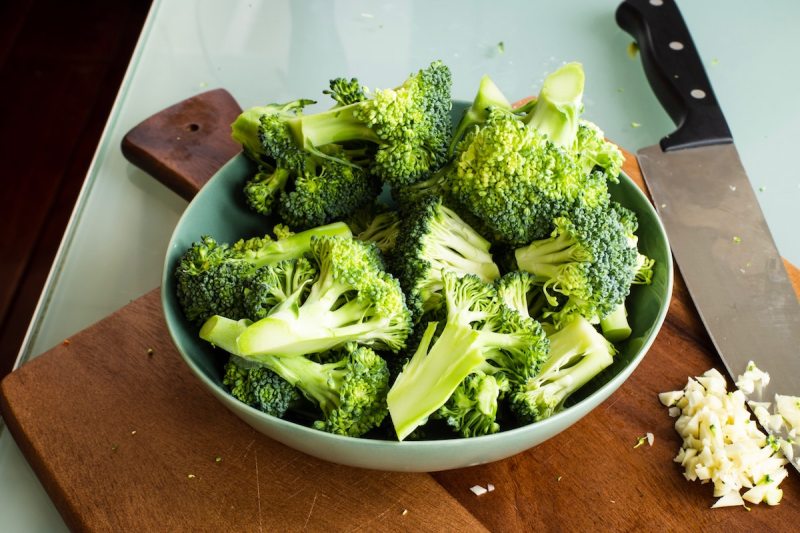Known for its essential role in gut health, fiber is an important nutrient that should be included in your diet daily. As a nutritionist, I work with many clients who are looking to lose weight. I often recommend that they pay attention to their fiber intake, as the nutrient can also be quite satiating, supporting weight loss efforts in addition to digestive health.
If you are looking to improve your health, consider adding these 11 high-fiber vegetables to your meal plan. Keep reading to discover more benefits of fiber and exactly how much you need to be consuming!
What is fiber?

Fiber is a form of carbohydrate the body cannot fully digest, and it’s found in plant-based foods. Unlike other carbs, fiber mostly stays in its whole form as it passes through the digestive system. There are two forms of fiber: Soluble fiber dissolves in water to form a gel-like substance, and insoluble fiber remains intact and adds bulk to stool.
Fiber is primarily found in the structural components of plants, such as cell walls, and it plays a key role in digestion. Since it is not broken down by digestive enzymes like other nutrients in foods you consume, fiber moves through the intestines, interacting with water and gut bacteria in unique ways throughout the process.
What are the benefits of high-fiber foods?

Supports digestive health
High-fiber foods promote regular bowel movements by adding bulk to stool and preventing constipation. As I mentioned before, insoluble fiber helps food pass smoothly through the digestive tract, while soluble fiber supports gut bacteria and overall digestive function.
Aids in weight management
Another bonus of fiber is that it can help control your appetite by slowing digestion and increasing feelings of fullness. This can reduce overall calorie intake, making it easier to maintain or lose weight without feeling deprived if that is a goal you are currently pursuing.
Helps regulate blood sugar
Because soluble fiber slows the absorption of sugar into the bloodstream, it can help prevent blood sugar spikes and crashes. This is especially beneficial for anyone managing insulin resistance or diabetes; speak with your doctor if you want to consider using fiber as a tool to help with your blood sugar levels.
How much fiber do you need daily?

The recommended daily fiber intake varies by age and gender.
- Men under 50 should aim for 38 grams, and men over 50 need 30 grams.
- Women under 50 need 25 grams, and the requirement for women over 50 is 21 grams.
- Children need 14 to 31 grams, depending on how old they are.
If you can, try to get all your fiber from whole foods like fruits, vegetables, legumes, and whole grains. However, if you need some help reaching that goal, you can also take fiber supplements. Gradually increasing fiber intake while drinking plenty of water helps prevent digestive discomfort as well.
Most people don’t consume enough fiber, so you may currently be consuming less than you think if you’re not tracking it. In fact, an NIH study shares that “The decreasing dietary fiber intake over the centuries has fostered a gut microbiota detrimental to human health, leading to a global epidemic of diabetes, cancers, and other noncommunicable diseases.”
11 high-fiber vegetables to include in your diet

- Artichokes – One medium artichoke contains about 7 grams of fiber, making it one of the most fiber-rich vegetables. It’s a great addition to salads, dips, or roasted dishes.
- Broccoli – One cup of cooked broccoli provides 5 grams of fiber. This cruciferous vegetable is packed with nutrients and works well steamed, roasted, or added to stir-fries.
- Brussels sprouts – One cup of cooked Brussels sprouts has 4 grams of fiber. Roasting them enhances their flavor, and they pair well with balsamic glaze or garlic.
- Carrots – One cup of raw carrots contains 3.5 grams of fiber. They’re an easy snack, great for dipping, or delicious in soups and stews.
- Sweet potatoes – A medium sweet potato with skin provides 4 grams of fiber. Baking or mashing them retains their fiber content.
- Spinach – One cup of cooked spinach offers 4 grams of fiber. It’s a versatile leafy green that works in smoothies, omelets, or sauteed dishes.
- Kale – One cup of cooked kale provides 3.5 grams of fiber. It’s excellent in salads and soups or blended into green smoothies.
- Cauliflower – One cup of cooked cauliflower contains 3 grams of fiber. It can be mashed, roasted, or used as a low-carb rice substitute.
- Zucchini – One medium zucchini has about 2.5 grams of fiber. It’s great grilled, spiralized into noodles, or baked into dishes.
- Peas – One cup of cooked green peas offers 9 grams of fiber. They add a sweet, starchy element to meals and are easy to mix into soups or pasta.
- Bell peppers – One cup of sliced bell peppers contains 2.5 grams of fiber. They’re crunchy, flavorful, and perfect for snacking, stir-fries, or roasting.
Can you have too much fiber?

While fiber is an essential nutrient to include in your diet, you can still consume too much fiber, which can lead to digestive discomfort. Exceeding 70 grams per day may result in bloating, gas, cramping, and diarrhea. Excessive fiber can also interfere with nutrient absorption by binding to minerals like calcium, iron, and zinc, preventing proper absorption. Additionally, a sudden fiber increase without enough water can cause constipation instead of relief.
People with digestive conditions, such as irritable bowel syndrome (IBS), may be more sensitive to high fiber intake. To avoid any issues, gradually increase your fiber consumption and drink plenty of water to help everything move smoothly through the digestive system without causing discomfort.
Frequently asked questions

What are the top five high-fiber foods?
The top five high-fiber foods are lentils, chia seeds, black beans, oats, and strawberries. These foods are easy to incorporate into dishes like soups, salads, smoothies, and oatmeal throughout your day.
How do you get 30 grams of fiber in a day?
To get 30 grams of fiber daily, eat fiber-rich foods like oats, chia seeds, black beans, raspberries, and broccoli. Include whole grains, legumes, fruits, and vegetables in meals when you can, and drink plenty of water to aid digestion. You also want to increase fiber intake gradually to avoid digestive discomfort.
What is the best fiber for your bowels?
The best fiber for your bowels includes soluble fiber (oats, chia seeds, apples) to soften stools and insoluble fiber (whole grains, leafy greens, nuts) to promote movement. Psyllium husk is particularly effective in supporting regularity and gut health. A balanced mix of both fiber types ensures optimal digestion and bowel function.




